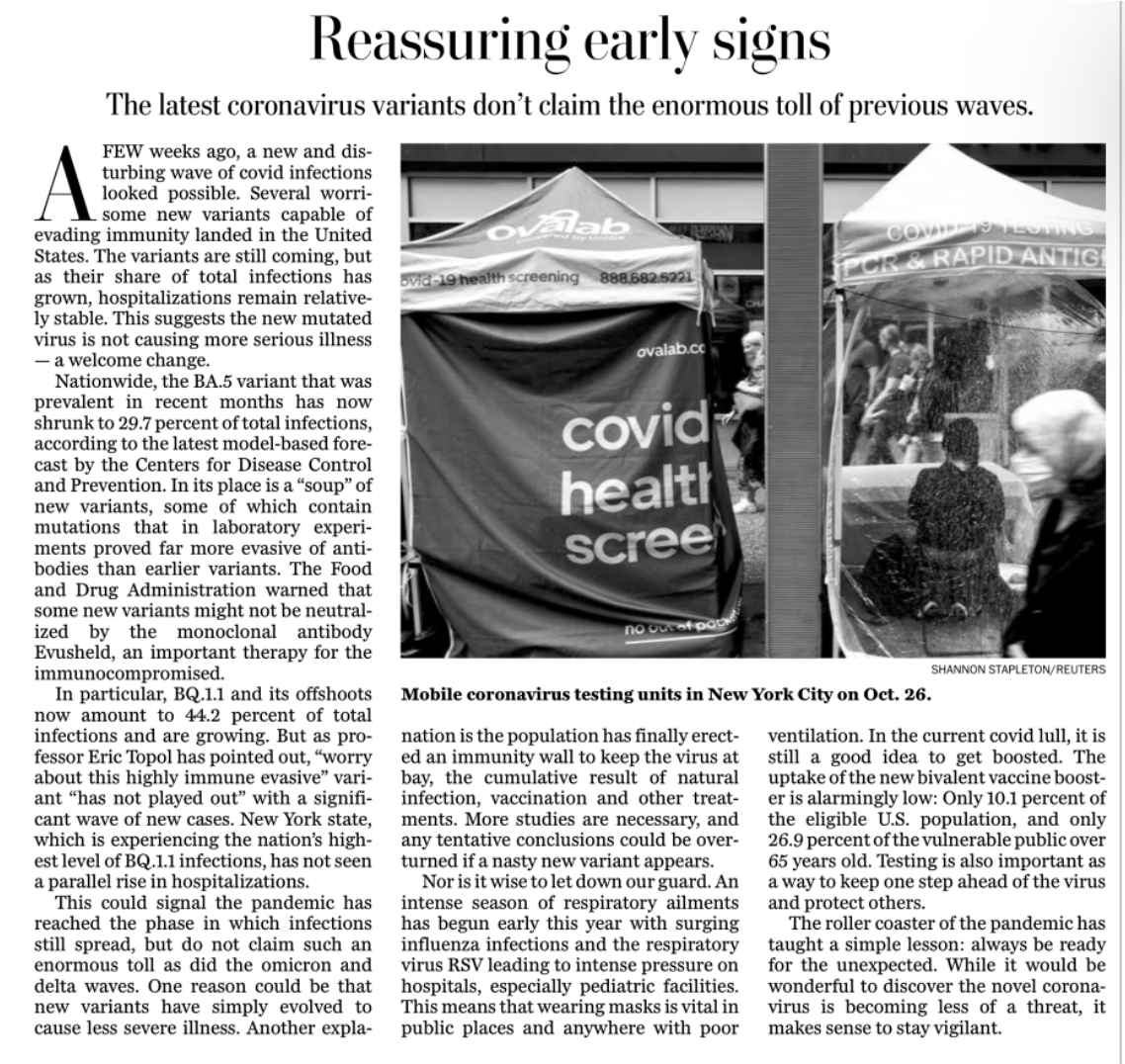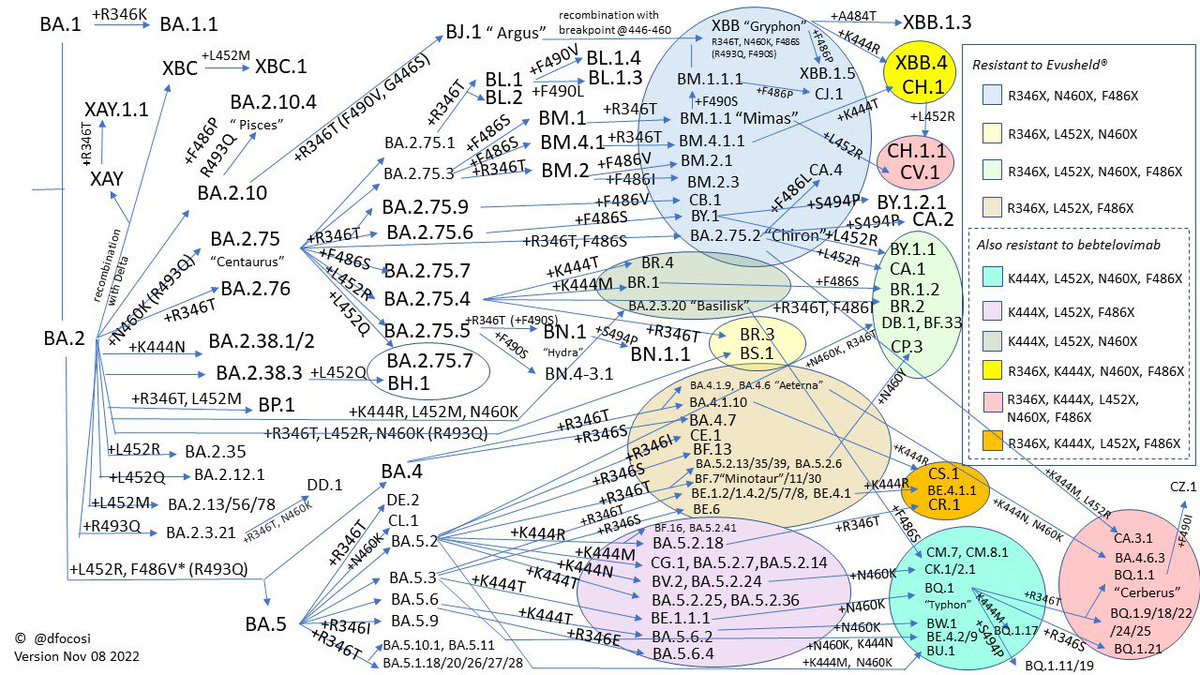New Booster Data
Today Moderna presented their data for the bivalent BA.5 booster which showed a solid (5-6 fold) increase in neutralizing antibodies as compared with the original strain booster (historical controls, like Pfizer). The range of 5.1-6.3 refers to whether or not the group had a prior Covid infection (6.3-fold for those without prior Covid). Notably, this was by far the largest assessment in over 500 adults, with most broad range of age 19-89, and also included a small study of 40 participants that demonstrated a “robust” response of neutralizing antibodies to BQ.1.1 (without actual data).
As you can see from the summary Table of all 7 reports on the bivalent, these findings are quite consistent with those of Emory (Suthar and colleagues), UT Galveston (Shi lab) and Pfizer, all with live virus assays showing a 3 to 6-fold increase in BA.5 neutralizing antibodies. In aggregate these live virus assay results provides compelling evidence of getting the added immune protection the bivalent booster provides. Unfortunately, more than 70% of senior Americans (age 65+) have yet to get a booster, no less younger age groups where the uptake rate is considerably lower.
Echoes of Optimism
Yesterday, the Washington Post Editorial Board wrote about the status of the pandemic, boosters, and the new variants, echoing and linking my recent substack note of optimism. A key point that I made in that post, which continues to be the case: “This uncoupling of immune escape predicted by lab assays vs a relatively benign clinical outlook is the first we have seen in the pandemic.” However, as the Post editorial asserted: “Nor is it wise to let down our guard,” emphasizing the appropriate use of masks and ventilation, and the need to get boosted.
More New Variants
Daniele Focosi (@dfocosi) provided an update today for the new variants, as seen below. The extreme right bottom, by number of mutations acquired, still contains BQ.1.1 which accounts for 24% of new cases in the United States as of Friday’s CDC update and has been steadily rising here in recent weeks, at least for now on a 4th towards dominance as was seen in France. Other variants of interest around the world include BR.2.1 which is showing growth advantage vs BQ.1.1 in parts of Australia, BE.9 in South America’s Amazon region, and so many others in the soup mix. As yet, none (besides BQ.1.1 and XBB) have reached a high level in any country. Until proven otherwise, I would consider BQ.1.1, with its documented marked immune evasion, to be a proxy of the lab properties for most of the other variants below. Let’s hope they will continue to play out in a non-threatening manner for severe Covid—major clinical adverse outcomes—but the low booster rate and considerable waning in the United States makes us more vulnerable than peer countries in Europe, Asia, Australia and New Zealand.
Where Do We Go From Here?
At the moment, the new variants are not the issue and may not play out like the drivers of previous waves. It is more the incipient winter, moving indoors, inadequate ventilation, and upcoming holiday gatherings. Our liability is attributable to a lack of maintaining vigilance, using high-quality masks at the appropriate times and settings, and allowing the waning of humoral immunity. I would strongly encourage the bivalent booster, particularly relevant for all age 50+, with respect to reduction in severe Covid. It likely also will help reduce the potential of Long Covid across all age groups, with the magnitude of benefit uncertain (perhaps in the 30-50% reduction range).
Even without a substantial increase of hospitalizations and deaths, an increase in cases poses an important risk for Long Covid as a sequelae. Here is the first-hand experience with Long Covid my former colleague and friend, Dr. Leonard Calabrese, a leading rheumatologist at Cleveland Clinic.
I have not lost hope for pushing on nasal vaccine boosters as a means of restoring high level protection from infections, and better, more durable, variant-proof Covid vaccines. To that end, today, I was glad to see the government funding request for”$8.25 billion for covid-response efforts, including a successor to Operation Warp Speed that some call “Project Covid Shield,” intended to jump-start development of coronavirus vaccines and treatments that would be effective against an evolving virus.”
Although it is long overdue, the US needs to dedicate resources and priority for these, anticipating the potential for SARS-CoV-2 to evolve well beyond a multitude of Omicron sublineages to a new family that is antigenically distinct.
Thanks for reading, subscribing and sharing Ground Truths






